Please use this identifier to cite or link to this item:
http://archive.nnl.gov.np:8080/handle/123456789/195| Title: | Corporate Financing Policy in Nepalese Enterprises |
| Authors: | Bhattarai, Yuga Raj |
| Keywords: | economic performance and value of corporations phenomenon of financing policy and its relationship |
| Issue Date: | 28-Mar-2019 |
| Abstract: | The choice of financing policy and its link with optimal risk exposure is central to the economic performance and value of corporations. Financing policy by firms requires managers to identify ways of funding new investments. Corporate financing decisions involve a wide range of policy issues. At the macro level, they have implications for capital market development, interest rate and security price determination, and regulation. At the micro level, they have implications for capital structure, corporate governance, and company development. In the past, there has been an upsurge in research on company finance, particularly aimed at understanding how companies finance their activities and why they finance their activities in these specific ways. An important financial decision facing firms is the choice between debt and equity capital (Glen and Pinto, 1994). Capital structure decision is important because of the need to maximize returns to various organizational constituencies, and also because of the impact such a decision has on a firm's ability to deal with its competitive environment. The capital structure of a firm is actually a mix of different securities. Capital structure, which is defined as total debt to total assets at book value, influences both the profitability and riskiness of the firm (Bos and Fetherston, 1993). In general, a firm can choose among different alternative capital structures. It can issue a large amount of debt or very little debt. It can arrange lease financing, use warrants, issue convertible bonds, sign forward contracts or trade bond swaps. It can issue dozens of distinct securities in countless combinations; however, it attempts to find the particular combination that maximizes its overall market value (Abor, 2005). The capital structure choice has long been an issue of great interest in the corporate finance literature. This interest is due to the fact that the mix of funds (leverage ratio) affects the cost and availability of capital and thus, firms’ investment decisions. However, Modigliani and Miller (1958) have shown that in an idealized world without taxes, the value of a firm is independent of the debt-equity mix. In short, capital structure is irrelevant to the value of firm. MM's original insights (1958) and continued developments (1963, 1965) have laid the foundations of modern corporate 2 finance. The Modigliani and Miller perspective has been supported by other researchers such as Hamada (1969) and Stiglitz (1974). Researchers have judged the Modigliani and Miller article as having the greatest impact on the field of finance of any work published (Cooley and Heck, 1981). Numerous researchers have built careers on the foundation of their (MM) work. DeAngelo and Masulis (1980) have analyzed the effects of taxes on capital structure. Myers (1977) has investigated the optimal levels of debt while Warner (1977) has explored the relationship between bankruptcy costs and capital structure. Jensen and Meckling (1976) have analyzed how managers behave under varying levels of debt and equity. To date, much of the empirical research has been applied to companies listed on advanced stock markets. However, these conclusions are at variance with what one sees in the real world, where capital structure matters and banks will be extremely unwilling to finance a project entirely with debt capital. Additionally, firms may find it difficult to raise external fund, and the costs of alternative forms of external finance may differ. Under market imperfections, firms may attempt to select levels of debt and equity in order to reach an optional capital structure. The greater the gearing a firm exhibits, the higher the potential for failure if cash flows fall short of those necessary to service the debts. Myers (1984) has pointed out that financial economists have not hesitated to give advice on capital structure, even though how firms actually chose their capital structures remains a puzzle as the theories developed did not seem to explain fully actual financing behavior. This view is supported by Harris and Raviv (1991) who point out that numerous attempts to explain capital structure have proved to be inconclusive. The capital structure decision is even more complicated when it is examined in a poor market context, particularly in developing countries where markets are characterized by controls and institutional constraints. Since the influential work of MM (1958) on the irrelevance of capital structure in investment decision, a rich theoretical literature has emerged that models firms' capital structure choice under different assumptions. |
| URI: | http://103.69.125.248:8080/xmlui/handle/123456789/195 |
| Appears in Collections: | 300 Social sciences |
Files in This Item:
| File | Description | Size | Format | |
|---|---|---|---|---|
| Annexure 1-YRB.pdf | 423.3 kB | Adobe PDF | 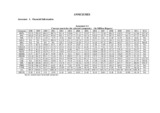 View/Open | |
| Bibliography -Final -YRB.pdf | 399.18 kB | Adobe PDF | 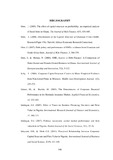 View/Open | |
| CORPORATE FINANCING POLICY -Final-YRB.pdf | 805.83 kB | Adobe PDF |  View/Open | |
| Determinants of capital Structure- Final-1-YRB.pdf | 958.74 kB | Adobe PDF | 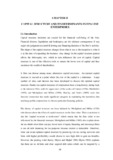 View/Open | |
| Effect of leverage on cost of capital-Final-YRB.pdf | 563.73 kB | Adobe PDF |  View/Open | |
| Effect of leverage on Profitability-Final-YRB.pdf | 911.07 kB | Adobe PDF |  View/Open | |
| Effects of Leverage on Firm Value- Final-YRB.pdf | 479.66 kB | Adobe PDF | 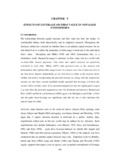 View/Open | |
| Introduction Chapter-final-YRB.pdf | 239.81 kB | Adobe PDF | 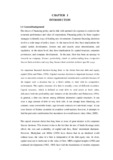 View/Open | |
| Preliminary Pages-I-Final-YRB.pdf | 114.06 kB | Adobe PDF | 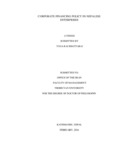 View/Open | |
| Preliminary Pages-II -Final-YRB.pdf | 118.12 kB | Adobe PDF | 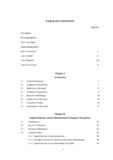 View/Open | |
| Questionnaire-PhD -YRB.pdf | 203.93 kB | Adobe PDF | 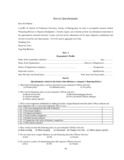 View/Open | |
| Summary, conclusion and recommendation-PhD-YRB.pdf | 171.87 kB | Adobe PDF |  View/Open |
Items in DSpace are protected by copyright, with all rights reserved, unless otherwise indicated.